
Here is the full version of our 80-page September edition of Tudor Life Magazine. This month we focus on Katherine of Aragon, the first wife of Henry VIII.
[Read More...]
Here is the full version of our 80-page September edition of Tudor Life Magazine. This month we focus on Katherine of Aragon, the first wife of Henry VIII.
[Read More...]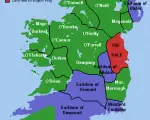
Born in about 1530, Shane O’Neill (Seán Mac Cuinn Ó Néill) was the youngest son of Conn Bacach O’Neill, Earl of Tyrone. His father was forced to recognise Henry VIII as his overlord and monarch, acknowledging his laws and supremacy and agreeing to renounce the Pope. Conn petitioned the king for the earldom of Ulster, but was offered instead the earldom of Tyrone, which he accepted. He later travelled to England to formally submit to Henry in person. Conn’s eldest son Mathew was created Baron of Dungannon at this time and had the right to succeed his father as Earl of Tyrone. Shane, as an adolescent, was excluded from the negotiations leading to the settlement.
[Read More...]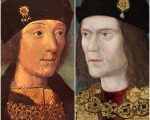
On this day in history, the 22nd August 1485, in rural Leicestershire near Market Bosworth, the armies of King Richard III and Henry Tudor faced each other in a battle that would see the death of the King and the beginning of a new dynasty: the Tudor dynasty.
When Henry Tudor challenged the King on that August day, Richard III had been King for just over two years. He had gone from being Lord Protector to the young King Edward V, the twelve-year-old son of Richard’s brother Edward IV, to being King after Edward IV’s sons were declared illegitimate. His challenger, Henry Tudor, was the son of Edmund Tudor, 1st Earl of Richmond, and Lady Margaret Beaufort, a woman descended from John of Gaunt, third son of Edward III. As a Lancastrian, Henry had fled to Brittany in France, after Edward IV successfully regained the throne from Henry VI in 1471. He returned to England after his mother had conspired with Elizabeth Woodville, Edward IV’s widow, to arrange a marriage between Elizabeth’s daughter, Elizabeth of York, and Henry, and to promote Henry as an alternative to Richard III.
[Read More...]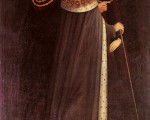
On this day in history, 17th August 1510, the second year of King Henry VIII’s reign, Henry VII’s former chief administrators, Sir Edmund Dudley and Sir Richard Empson, were beheaded on Tower Hill after being found guilty of treason.
Chronicler Edward Hall records:
“The kynge beyng thus in hys progresse harde euery daye more and more complayntes of Empson and Dudley, wherfore he sent wryttes to the Shynfes of London, to put them in execucion, and so the xvii. day of August, they were both behedded at the Towre hyl, and their bodies buryed and their heades.”
[Read More...]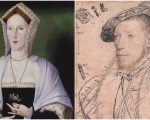
On this day in history, 14th August, two prominent Tudor people were born: Margaret Pole, Countess of Salisbury, in 1473, and William Parr, Marquis of Northampton, in 1513.
Margaret Pole, Countess of Salisbury, born on 14 August 1473, was the only surviving daughter of George, Duke of Clarence, and his wife, Isabel Neville. She was the niece of Edward IV and Richard III, and cousin of Elizabeth of York, Henry VII’s consort. Her brother, Edward, Earl of Warwick, was executed by Henry VII in 1499 in response to a request forwarded by the Spanish monarchs during the marital negotiations between Arthur, Prince of Wales, and Katherine of Aragon, since they feared that Warwick’s presence would encourage rebellion against the Tudor dynasty.
[Read More...]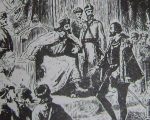
I’ve been inspired recently to research the links between Russia and the Tudors so I hope you enjoy this video talk on the Muscovy Company.
[Read More...]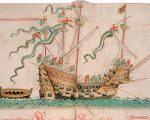
On this day in history, 10th August 1512, the Battle of Saint-Mathieu took place. It was a naval battle in the War of the League of Cambrai and it was between the English and Franco-Breton fleets off the coast of Brest, in present day Brittany, France. England was allied with Spain and the Holy Roman Empire at this time.
The Mary Rose, Henry VIII’s famous warship whose wreck was discovered in 1971 and raised in 1982, was chosen as the English fleet’s flagship by Sir Edward Howard, Admiral of the English fleet. It was her first battle. The twenty-five ship English fleet had set out from Portsmouth, on the south coast of England, after hearing news of the twenty-one ship French fleet gathering at Brest, and the two fleets engaged in Berthaume Bay on 10th August 1512.
[Read More...]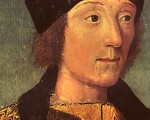
On this day in history, Sunday 7th August 1485, Henry Tudor, son of Lady Margaret Beaufort and the late Edmund Tudor, Earl of Richmond, “came unto Wales”, returning from exile in Brittany to claim the throne of England from Richard III.
Polydore Vergil records Henry’s return:
“Than Henry, thinkinge yt nedefull to make haste, that his arrive the frinds showld not be any longer kept in perplexytie betwene hope and drede, uncertane what to do, after he had made hisprayers to God that he might have an happy and prosperousjourney, he lowsyd from the mowth of Seyne with two thousand onely of armyd men and a few shippes, the calends of August, and with a soft suthren wynde. The weather being very fayre he came unto Wales the 7th day after, a lyttle before soone set, wher, entring thaven caulyd Milford, and furthwith going a land, he took
first a place the name wherof ys Dalley, wher he herd that certane companyes of his adversaryes had had ther stations the wynter by past to have kept him from landing. From thence departing in the breake of dav he went to Haverforde, which vs a towne not xne. myles from Dalley, wher he was receavyd with great goodwill of all men, and the same he dyd with suche celerytie as that he was present and spoken of all at once.”
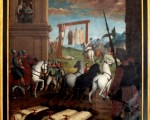
On 4th August 1540, Brother William Horne, laybrother of the London Charterhouse, was executed. He was hanged, disembowelled and quartered at Tyburn and was the last of the Carthusian Martyrs to be killed. Between May 1535 and August 1540, eighteen members of the Carthusian order were put to death for refusing to accept King Henry VIII as the Supreme Head of the Church.
You can read more about the Carthusian Martyrs in my article Henry VIII and the Carthusian Monks.
Horne wasn’t the only one to be executed that day. Chronicler Charles Wriothesley records:
“This yeare, the fowerth daie of Awgust, were drawen from the Tower of London to Tiburne, Giles Heron, gentleman, Clement Philpott, gentleman, late of Callis, and servant to the Lord Lile, Darbie Gynning, Edmonde Bryndholme, priest, William Horn, late a lay brother of the Charter Howse of London, and another, with six persons more, were there hanged drawen, and quartered, and one Charles Carow, gentleman, was that daie hanged for robbing of my Ladie Carowe, all which persons were attaynted by the whole Parliament for treason.”
[Read More...]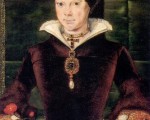
On 2nd August 1553, Elizabeth, second daughter of King Henry VIII, greeted her half-sister Mary, the new queen, at Wanstead. The women then spent the night at Wanstead House, a royal hunting lodge. The following day, 3rd August, Mary and Elizabeth rode from Wanstead to Aldgate for Mary to be greeted by the city as its queen.
Here are some primary source accounts of Mary I’s entry into London on 3rd August 1553…
Henry Machyn, “citizen and merchant-taylor of London”, recorded in his diary:
[Read More...]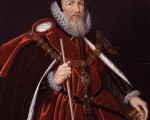
On this day in history…
31 July:
1544 – The future Elizabeth I wrote her earliest surviving letter to her stepmother, Catherine Parr. It was written in Italian and in a beautiful italic hand. Click here to read more about it.
1549 – Death of Edmund Sheffield, 1st Baron Sheffield, in Norwich. It is said that he was killed by a butcher called Fulke, while serving in the royal army against the rebels of Kett’s Rebellion. Apparently, he stumbled into a ditch and then was killed by a blow from Fulke. Sheffield was buried in St Martin’s at the Palace, Norwich.
1553 – Henry Grey, Duke of Suffolk, “was discharged out of the Tower by the Earle of Arundell and had the Quenes pardon.”
1574 – Death of John Douglas, Archbishop of St Andrews and educational reformer, in St Andrews. He was buried in the public cemetery. It is said that he died in the pulpit.
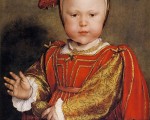
Thank you to Dora for asking the question “Why were children set up in separate households?” Historian and author Gareth Russell, who has done extensive research on royal households, is answering this question…
The reasons for royal and aristocratic children being sent to their own establishments at very young ages were a mixture of pragmatism and tradition.
It’s worth noting that many foreigner visitors to England did think it was odd that aristocratic children were habitually sent to other households to finish their education. In England, there was a school of thought that held parents would spoil their own children because they naturally loved them too much and that this would, literally, spoil the child’s education. So, a host family was sometimes considered better for the child’s long-term development and education. It also offered families, and the child, to establish a network of connections at an early age which would help them later in life.
[Read More...]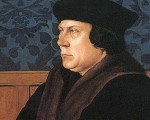
As it is the anniversary of the execution of Thomas Cromwell today, in this week’s Claire Chats video talk Claire talks about the primary sources accounts of Cromwell’s execution, his scaffold speech and the prayer he said. She talks about the controversy over his speech and what his prayer said about his faith.
[Read More...]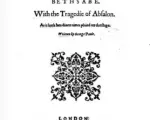
Today is the anniversary of the baptism of poet and playwright George Peele on 25th July 1556 at St James Garlickhythe, London. As is the case with many Tudor people, his date of birth is unknown but it is likely to have been just a few days before his baptism.
Peele was one of the younger sons of James Peele, who was the author of books on book-keeping and who also wrote and organised pageants for the City of London, and his first wife, Anne. James became clerk of Christ’s Hospital in November 1562 and the family moved there. Between 1562 and 1571, George Peele was educated at the petty school and grammar school of the hospital, and then in 1571 he went on to study at Oxford, first at Broadgates Hall (now Pembroke College) and then at Christ Church. He graduated BA in 1577 and MA in 1579, both from Christ Church. While he was at college, Peele translated Euripides’ “Iphigenia” and he also wrote his poem “The Tale of Troy”.
[Read More...]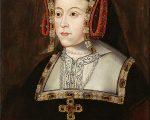
Thank you to Tudor Society member Angela for asking the question “Should Ferdinand of Aragon have insisted on Katherine’s return when Prince Arthur died?”. Historian Amy Licence, who is the author of “Catherine of Aragon: An Intimate Life of Henry VIII’s True Wife” has answered Angela’s question…
This is a complex question, because Katherine’s position in England fluctuated during the period of her widowhood between 1502 and 1509. Also, we have to consider the dual impulses in Ferdinand, as a father on one hand, and as a monarch on the other, playing on the international stage, on which all his children were pawns for the furtherment of the Spanish Empire. Out of Katherine’s parents, it was Isabella of Castile who played a more active role in terms of writing to Henry VII before and after her daughter’s wedding, so she was really the commanding figure of the pair until her death in 1505. We must be careful too, with the word “should,” because it is suggestive of hindsight. We know what an awful time Katherine was to have during her widowhood and later, at the hands of Henry VIII, but back then they didn’t know how things would turn out.
[Read More...]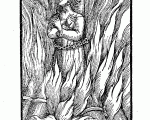
On this day in history, 17th July 1555, Protestants Margaret (Margery) Polley and Christopher Wade (Waid) were burned for heresy. Wade was a linen-weaver from Dartford and Polley was a widow from Pepenbury, Tunbridge Wells.
Martyrologist John Foxe described Margaret Polley as being “in the prime of her life, pious, charitable, humane, learned in the Scriptures, and beloved by all who knew her” and “the first female martyr in England”, although surely that title actually belongs to Anne Askew, who was burned for heresy in 1546.
Here is John Foxe’s account of the condemnations and burnings of Polley and Wade:
[Read More...]
In today’s Claire Chats video, I look at the primary sources for the great drought of 1540, the same summer that Henry VIII married Catherine Howard and executed Thomas Cromwell.
[Read More...]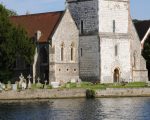
Today is the anniversary of the death, on 13th July 1566, of Sir Thomas Hoby, diplomat, courtier and translator, at Paris. Hoby was buried in All Saints Church, Bisham.
Hoby was the second son of William Hoby of Radnor and his wife, Katherine Forden, and he was born at Leominster in Herefordshire in 1530. He was educated at St John’s College, Cambridge, matriculating in May 1545. Between 1545 and 1547 he studied under the famous Tudor scholar John Cheke but in August 1547, heeding the advice of his half-brother, Sir Philip Hoby, he left Cambridge without obtaining a degree and set off for the Continent. His Oxford Dictionary of National Biography biographer writes of how he studied classics and theology for nearly a year in Strasbourg as the guest of reformer Martin Bucer.
[Read More...]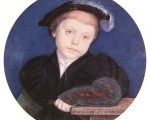
On this day in history…
10th July:
1553 – Lady Jane Grey, her husband, Guildford Dudley, her parents and Guildford’s mother arrived by barge at the Tower of London, having travelled from Syon. Two heralds then proclaimed that Lady Jane Grey was now Queen of England before they moved on to proclaim their message in Cheapside and Fleet Street.
1553 – A letter arrived from Mary, daughter of Henry VIII, informing the council that she was the rightful heir to the throne, not Lady Jane Grey, and demanding their support.
1559 – Death of Henry II of France. He had been injured in a joust on 30th June when he was hit in the face by a lance. It is thought that a splinter entered his eye and went into his brain. He was buried in the Saint Denis Basilica.
1559 – Accession of Francis II and Mary, Queen of Scots as King and Queen of France.
1584 – Assassination of William of Orange, also known as William the Silent or William I, Prince of Orange. He was shot in the chest at his home in Delft by Balthasar Gérard, a Catholic Frenchman. A reward of 25,000 crowns had been offered by Philip II of Spain for the assassination of William, who was the main leader of the Dutch Protestant revolt against Spanish forces in the Netherlands. William was buried in the New Church in Delft. Gérard was captured and was tortured for days before being executed on 14th July 1584.
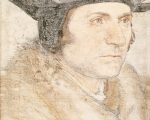
Yesterday was the anniversary of the execution of Sir Thomas More, former Lord Chancellor to Henry VIII, on 6th July 1535. To commemorate that anniversary, I thought I would share with you a brief bio of More, based on an extract from my book On This Day in Tudor History, and then some videos about him.
Sir Thomas More is thought to have been born on 7th February 1477 or 1478 n Milk Street, London, and he was the son of Sir John More, lawyer and judge on the King’s Bench, and Agnes Graunger, daughter of Thomas Graunger, a Merchant of the Staple of Calais and an Alderman of London.
More joined the household of John Morton, Archbishop of Canterbury, before studying Latin and logic at the University of Oxford. He then studied law in London. It was while he was a student that he met and became friends with men like William Lilye, John Colet and Erasmus.
[Read More...]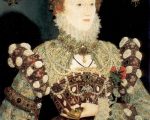
The Northern Rebellion of 1569, also known as the Revolt of the Northern Earls, was the only major armed rebellion during the reign of Elizabeth I. In the last months of 1569, the earls of Northumberland and Westmorland rebelled against the queen in an attempt to preserve Catholicism. The establishment of the Elizabethan settlement alienated those who favoured the old religion, and their disaffection increased as growing numbers were arrested and imprisoned for religious nonconformity. This disaffection was spurred by the arrival in England of Mary, Queen of Scots, in 1568, the year before the rebellion. Mary had been forced from her throne after the murder of her second husband Henry, Lord Darnley, and her swift remarriage to Darnley’s suspected murderer, James, Earl of Bothwell. Mary’s Catholic faith made her a sympathetic figure to traditionalists in England. Although the majority of English Catholics remained loyal to Elizabeth, some were determined to force her from the throne and replace her with her cousin Mary, who they hoped would restore Catholicism to the realm.
[Read More...]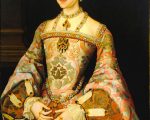
Born around 1512 to a family of gentry status, Katherine was the oldest daughter of Sir Thomas Parr, a late fifteenth-century courtier and knight. Her mother was Maud Green, a close friend and lady in waiting to Henry VIII’s first wife, Katherine of Aragon. The Parrs were a substantial northern family, with Thomas Parr tracing his ancestry to Edward III. Parr was a well-respected man and enjoyed the patronage of the young Henry VIII, who in 1515 sent him to Newcastle to escort his sister, the Princess Margaret, on her month-long progress south to London. Reports suggest he was charming and gallant, with the princess finding him particularly desirable; he soon became a favourite at Henry’s court. Upon his death in 1517 he left portions of £400 (£140,000 in modern value) to his two daughters, with a considerable amount more remaining for his son William.
Without the presence of a male figure in what was a patriarchal period, Maud was dealt the challenging duty of raising her children while maintaining a presence at court. Throughout these challenges, Maud was successful; she managed her estates and finances accordingly, oversaw her children’s education and arranged suitable unions for them befitting their status and marriageability.
[Read More...]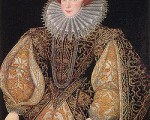
Lettice Knollys was born on 8 November 1543 at Rotherfield Greys in Oxfordshire. She was the eldest of sixteen children born to Sir Francis Knollys and his wife, Katherine Carey. Lettice’s mother was the daughter of Mary Boleyn, meaning that Lettice was the great niece of Anne Boleyn. She was also a kinswoman of Elizabeth I. Francis and Katherine Knollys departed for the Continent in the mid-1550s to escape the religious persecution during Mary I’s reign, but it is possible that Lettice remained with Elizabeth Tudor at Hatfield. When Elizabeth came to the throne in 1558, Francis was appointed vice-chamberlain and Katherine, who was close to the queen, was appointed a lady of the bedchamber. Lettice, now in her teens, served as a gentlewoman of the privy chamber.
[Read More...]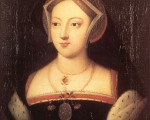
Mary Boleyn was probably the eldest daughter of Sir Thomas Boleyn and Elizabeth Howard. She was most likely born at Blicking Hall, Norfolk. The date of her parents’ union is open to question, but fragmentary evidence indicates that they had married by 1501 at the latest. Mary was probably born at the turn of the 16th century. It is possible that she accompanied Henry VIII’s sister Mary to France in 1514 in readiness for her marriage to Louis XII, but whether she resided at the French court has never been resolved. Hostile rumours in circulation during the 1530s claimed that Louis’ successor, Francois I, knew Mary to have been promiscuous, but it is uncertain whether this meant she had gained her supposedly dubious reputation in France. Possibly Mary indeed resided at the French court during her teenage years, but if so she had certainly returned to England by early 1520, for her marriage to Henry VIII’s attendant, William Carey, occurred on 4 February that year. It is possible that she served Katherine of Aragon, but there is no evidence that she did so.
[Read More...]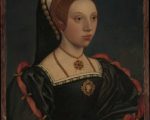
Like her cousin Anne Boleyn, Katherine Howard was a granddaughter of Thomas Howard, 2nd Duke of Norfolk, and a niece of the third duke. She was born in about 1523, probably at Lambeth, to Edmund and Jocasta Howard. During her infancy, Katherine’s mother died and her father, who seems to have been both irresponsible and financially straitened, remarried twice. In 1531, when she was about eight years old, she departed for the household of her step-grandmother, Agnes, Dowager Duchess of Norfolk, at Cheshunt. The dowager duchess, who was one of the premier noblewomen in England, also kept a household at Norfolk House in London and regularly resided at court. Her periods of absence prevented her from supervising her household as closely as she might have liked.
[Read More...]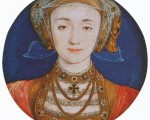
Anne of Cleves was born on 22nd September 1515 in Dusseldorf to John III, Duke of Cleves, and his wife, Maria. Like Henry VIII’s first wife, Katherine of Aragon, Anne was born into a highly influential and politically active family. Her sister Sybille was married to the Elector of Saxony, and her brother, Wilhelm, became the future Duke of Cleves-Burg, and would be instrumental in negotiations regarding her future marriage.
Anne was born during the volatile reformation period, resulting in reforms against traditionalist Catholicism, which was spreading through western and northern Europe. Her mother has been described as a conservative Catholic, however, her sister Sybille’s husband was a renowned Lutheran, often given the epithet ‘champion of the reformation’, and a good friend of its founder, Martin Luther. Anne was originally intended to be married into the House of Lorraine when she was eleven in 1527. There were numerous negotiations regarding the union, but nothing was cemented, and by 1535 all official wedding discussions had essentially been rejected, leaving the desirable duke’s daughter available on the European marriage market. Henry VIII and his council were searching for a new wife after the death of Queen Jane Seymour in 1536, with rumours of a possible union with the Duchess of Milan. The French had aligned themselves to the Habsburgs and signed a ten-year truce in 1538 (although this never lasted), cementing a union between Europe’s two major Catholic powerhouses. Cromwell, Henry’s leading minister at the time, suggested a counter alliance with a Lutheran house in Germany, even though Anne’s family were relatively mild in their reformist views. Cromwell was aware that England was potentially vulnerable to a Franco-Habsburg invasion, and influenced the king that negotiating with the newly appointed Duke Wilhelm (Anne’s father had died in 1539) would be a successful diplomatic adventure, that would ensure the prosperity of England against foreign invasion.
[Read More...]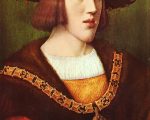
On this day in history, 6th June 1522, Charles V, the Holy Roman Emperor, made a grand entry into London accompanied by King Henry VIII.
You can read two primary source accounts of Charles’s entry, and the pageantry involved, in the chronicles of Edward Hall and Charles Wriothesley at the following links
[Read More...]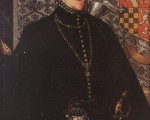
On this day in history, 2nd June 1572, Thomas Howard, 4th Duke of Norfolk, was executed on Tower Hill for treason. His remains were buried in the Chapel of St Peter ad Vincula at the Tower of London.
Thomas was the eldest son of Henry Howard, Earl of Surrey, and his wife, Frances de Vere, and he was born on 10th March 1538 at Kenninghall. His father was executed in January 1547 so his aunt, Mary Fitzroy, Duchess of Richmond, was in charge of his early upbringing. His tutors included Hadrianus Junius, the martyrologist John Foxe and Bishop John White. When he was 15 years of age, in September 1553, he was made a Knight of the Bath by Mary I and he helped his grandfather, Thomas Howard, 3rd Duke of Norfolk, Earl Marshal and Lord High Steward, officiate at the queen’s coronation and coronation banquet in October 1553.
In July 1554, Thomas was appointed as first gentleman of the chamber to Philip of Spain, Mary I’s new husband. He became the Duke of Norfolk following the death of his grandfather on 25th August 1554 and also inherited his grandfather’s office of Earl Marshal. In 1555 he married Mary Fitzalan, daughter and heir of Henry Fitzalan, 12th Earl of Arundel. During Mary I’s reign, he was rewarded with offices including High Steward of Cambridge and Great Yarmouth, and Lord Lieutenant of Norfolk and Suffolk. His wife, Mary, died on 25th August 1557, having given birth to a son, Philip, on 28th June 1557. Thomas went on to marry his cousin, Margaret Dudley, widow of Lord Henry Dudley and heir of Thomas, Lord Audley of Walden, shortly after the accession of Elizabeth I in 1558.
[Read More...]
On this day in history, 31st May 1578, Sir Martin Frobisher set sail with his fleet from Harwich, England, to Frobisher Bay, Canada. By 31st August 1578, Frobisher and his men had mined 1370 tons of ore, which was loaded onto the ships to take back to England. Unfortunately, no gold or other precious metal was found in the ore.
But who was Sir Martin Frobisher?
Sir Martin Frobisher was a privateer, explorer and naval commander who was born around 1535. He was born in Altofts, near Normanton, West Yorkshire, and was the son of Bernard Frobisher and Margaret Yorke. After his mother’s death he was sent to live with Sir John Yorke, a relative of his mother’s, in London. Yorke was a merchant adventurer.
Frobisher took part in a voyage to Guinea in 1553 which Yorke had invested in and which was led by Thomas Wyndham. He acted as assistant to John Beryn, Yorke’s factor. A fever wiped out over two-thirds of the crew, including Wyndham, but Beryn and Frobisher survived. In 1554, Frobisher took part in a voyage to Guinea led by John Lok and ended up being taken into custody by the Portuguese and being held by them for 2-3 years.
[Read More...]
Margaret Pole, Countess of Salisbury, born on 14 August 1473, was the only surviving daughter of George, Duke of Clarence, and his wife, Isabel Neville. She was the niece of Edward IV and Richard III, and cousin of Elizabeth of York, Henry VII’s consort. Her brother, Edward, Earl of Warwick, was executed by Henry VII in 1499 in response to a request forwarded by the Spanish monarchs during the marital negotiations between Arthur, Prince of Wales, and Katherine of Aragon, since they feared that Warwick’s presence would encourage rebellion against the Tudor dynasty.
Perhaps in 1487, when she was fourteen, Margaret married Sir Richard Pole, a disparaging marital alliance from her perspective in view of her royal blood. Richard was later made an esquire of the body, chamberlain of North Wales, chamberlain of Chester and a member of the council in the Welsh Marches. In 1493, he was appointed chamberlain to the king’s son, Arthur, whose household was established at Ludlow that year. In 1499, he was elected to the Order of the Garter and participated at the proxy wedding of Arthur to Katherine. In 1504, Richard died, and Margaret was granted a generous loan to ensure that her husband’s funeral would be appropriately honourable. When not at court, she seems to have resided primarily at Warblington Castle and Bisham Manor. With Richard, she had five children: Henry, Arthur, Reginald, Geoffrey and Ursula.
[Read More...]